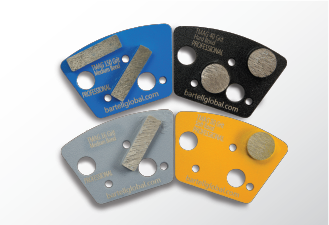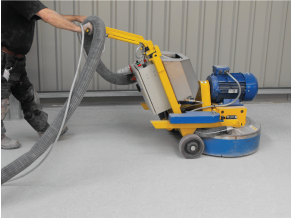Polished Concrete is a flooring option that is becoming more and more popular every day. With the lifetime cost and different looks you can achieve, it’s no wonder that people are using this option in many different settings.

Even if you are not a polished concrete contractor, you may be after reading this. There is money to be made in this area if you understand and execute the areas we are going to highlight.
Let’s get to the good stuff. Here is the nugget to take with you.
The key to increasing profits when polishing is through high quality work. This may sound like a simple concept, but begin able to produce high quality polished concrete is no easy task.
Here are 5 tips to help you increase profits when polishing concrete:
 1) Inspect the slab before starting
1) Inspect the slab before starting
When polishing concrete, there are many variables that come into play. The best way to make sure that the final product is what you and the customer are looking for is to understand what kind of slab you are working with. If you fail to do this, there is a chance that the final product will not look like you promised, resulting in unsatisfied customers and potentially more work for you. If you do work right the first time, you can increase your profits dramatically.
2) Choose the right diamond tooling
This is a must. Choosing the correct metal bonds, resins and chemicals in the concrete polishing process will make sure that you keep the profits in your pocket rather than wasting them on bad tooling choices.
Pick high quality tooling that is cost effective.
3) Choose the right speed
Faster is not always better. There is an optimal speed for each grinder that will result in effective grinding or polishing. For example, when you run the grinder too fast, you reduce your torque, and tend to not dig into the slab as effectively and can create more work for yourself. If you are glazing over the concrete, you will need to go over the same spot more times to get an even scratch pattern.
 4) Polish Dry
4) Polish Dry
Not to say that polishing wet is worse or not an option, but we believe polishing dry is better in most situations for two main reasons. The first is that you are able to inspect the scratch pattern much easier. Think of it like this. When you go outside and spray water on your deck or patio, it looks spectacular. After you come back a few hours later and the water has dried up, you begin to see the imperfection much more clearly. The same applies to concrete. When the slab is wet, it is easy to miss scratch pattern imperfections because of the water masking it. When you a looking at a dry surface, it is easy to see the scratch pattern truthfully.
A good inspection of your slab before hand will allow you to identify which strategy is best for you. When working in some conditions or with certain materials, using water in your polishing process may be the correct option.
5) Inspect your scratch pattern
When polishing, the different stages work similar to sand paper on wood. Each finer grit is used to take out the scratches of the previous step. It is important that you have an even scratch pat- tern before moving onto the next step so that your polish turns out evenly. If your scratch pattern is not even, you may need to go back over the entire area again.
If you follow these tips, you will be able to increase the quality of your polished concrete floors & reduce time and cost wasters.
Looking for more info on this topic? Download our full guide here.


 By
By 